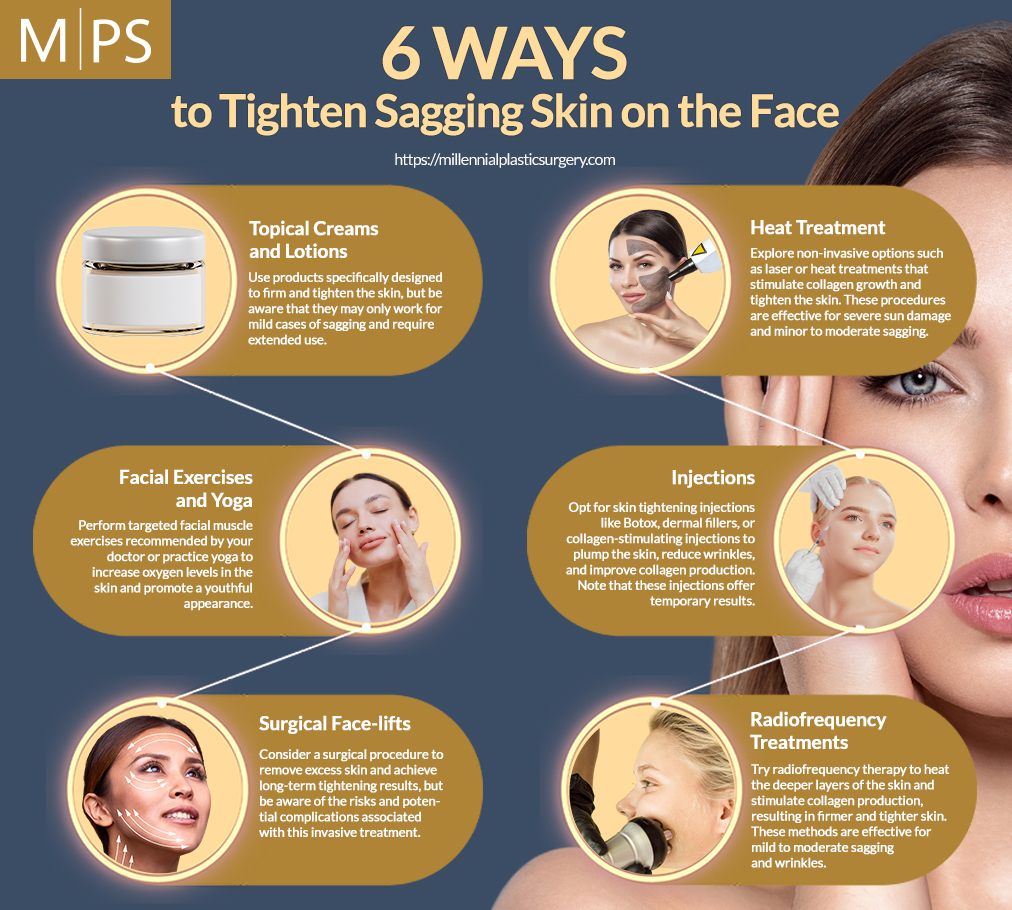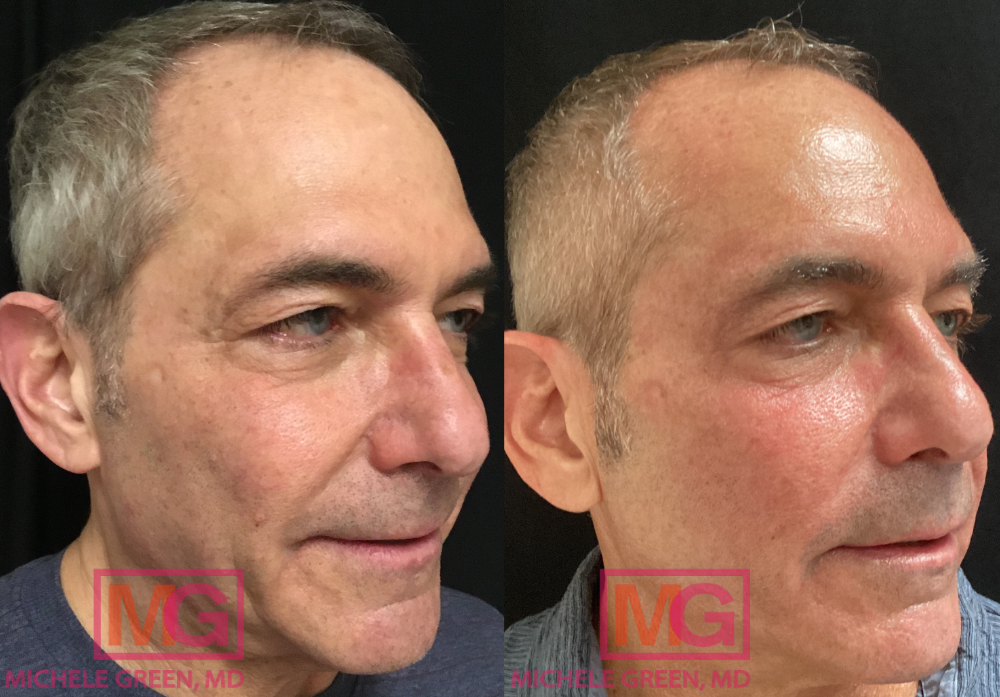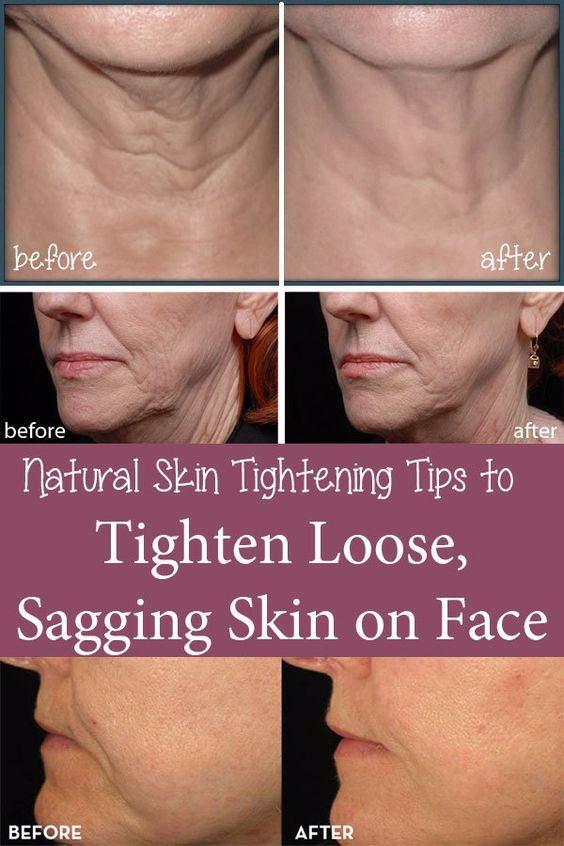Best Way To Tighten Skin On Face

As we age, the skin's natural elasticity diminishes, leading to sagging and the appearance of fine lines and wrinkles. Many individuals seek solutions to tighten skin on the face, aiming for a more youthful and rejuvenated look. The options available range from non-invasive treatments to surgical procedures, each with varying degrees of effectiveness and associated risks.
This article explores the landscape of facial skin tightening, examining the different methods, their efficacy, and what to consider when choosing the best approach. Understanding the nuances of each treatment is crucial for making an informed decision and achieving desired results. We will delve into the science behind skin aging and the mechanisms by which these treatments work.
Understanding Skin Aging and Elasticity
Skin elasticity is largely determined by the presence of collagen and elastin, two essential proteins in the dermis. Collagen provides structural support and firmness, while elastin allows the skin to stretch and recoil. As we age, the production of these proteins naturally decreases, leading to a loss of elasticity and the formation of wrinkles.
External factors, such as sun exposure, smoking, and pollution, can accelerate this process. These factors damage collagen and elastin fibers, further contributing to skin sagging. Genetic predisposition also plays a role in how quickly and visibly our skin ages.
Non-Invasive Skin Tightening Treatments
Topical Retinoids
Retinoids, derivatives of vitamin A, are widely used in skincare for their ability to stimulate collagen production. Topical retinoids can improve skin texture and reduce the appearance of fine lines over time. They work by increasing cell turnover and promoting collagen synthesis in the dermis.
It's important to start with a low concentration and gradually increase as tolerated to minimize irritation. Consistent use is key to seeing noticeable results, which typically take several weeks to months.
Radiofrequency (RF) Therapy
RF therapy uses energy waves to heat the dermis, stimulating collagen production and tightening existing collagen fibers. This non-invasive treatment is often used to improve skin laxity and reduce the appearance of wrinkles. Multiple sessions are usually required for optimal results.
RF treatments are generally considered safe, with minimal downtime. However, some individuals may experience temporary redness or swelling after the procedure.
Ultrasound Skin Tightening (HIFU)
High-Intensity Focused Ultrasound (HIFU) delivers targeted energy to the deep layers of the skin, causing controlled thermal damage that stimulates collagen production. HIFU can achieve more significant skin tightening than some other non-invasive methods.
While HIFU can be more effective, it may also be more uncomfortable than other non-invasive options. Results can typically be seen within a few months after treatment.
Laser Skin Resurfacing
Laser skin resurfacing uses laser energy to remove the outer layers of damaged skin, stimulating collagen production and revealing smoother, tighter skin underneath. Different types of lasers exist, with varying levels of invasiveness and downtime.
Ablative lasers remove the top layer of skin, providing more dramatic results but requiring a longer recovery period. Non-ablative lasers heat the dermis without removing the outer layer, resulting in less downtime but potentially less noticeable results.
Minimally Invasive and Surgical Options
Thread Lifts
Thread lifts involve inserting dissolvable sutures beneath the skin to lift and tighten sagging tissues. The sutures stimulate collagen production, further enhancing the tightening effect. This procedure offers a more immediate result than non-invasive treatments but is not a permanent solution.
Thread lifts are less invasive than traditional facelifts but may not be suitable for individuals with significant skin laxity. The results typically last for several months to a year.
Facelift (Rhytidectomy)
A facelift is a surgical procedure that involves removing excess skin and tightening underlying tissues to reduce sagging and wrinkles. It provides the most dramatic and long-lasting results for facial skin tightening. Facelifts are more invasive and require a longer recovery period.
The procedure is performed under anesthesia, and the surgeon makes incisions around the ears and hairline to access and manipulate the underlying tissues. While offering significant improvement, facelifts carry risks such as scarring, nerve damage, and infection.
Choosing the Right Approach
The best approach to tightening skin on the face depends on individual factors such as the degree of skin laxity, desired results, budget, and tolerance for downtime. Consulting with a qualified dermatologist or plastic surgeon is crucial to determine the most appropriate treatment plan. They can assess your skin condition, discuss your goals, and explain the potential risks and benefits of each option.
It's important to have realistic expectations about the outcomes of any skin tightening treatment. Non-invasive treatments may provide subtle improvements, while surgical procedures can achieve more dramatic transformations. A comprehensive consultation with a medical professional is essential to develop a personalized treatment plan and understand the potential results.
Ultimately, the decision to undergo any skin tightening procedure is a personal one. Weighing the potential benefits against the risks and considering individual circumstances is essential for making an informed choice. Remember that maintaining a healthy lifestyle, including sun protection, a balanced diet, and regular exercise, can also contribute to overall skin health and appearance.












![Best Way To Tighten Skin On Face Best Face Mask To Tighten Skin Reviews [Updated] 2020](https://shopvideri.com/blogs/wp-content/uploads/2022/03/Best-Face-Mask-To-Tighten-Skin.jpg)





